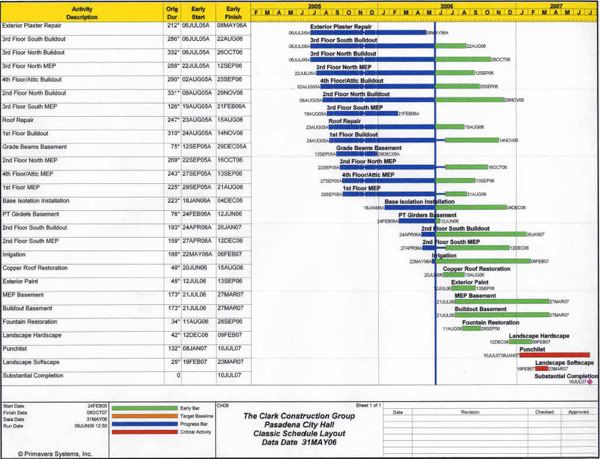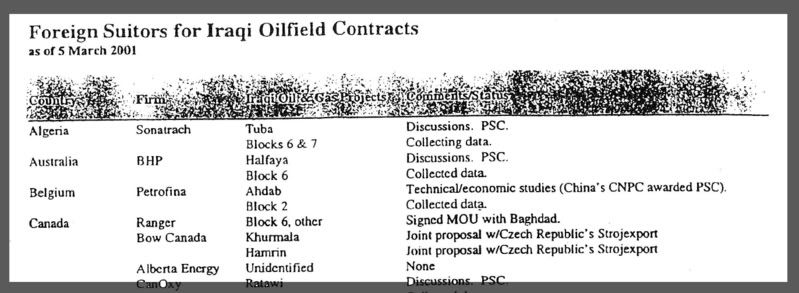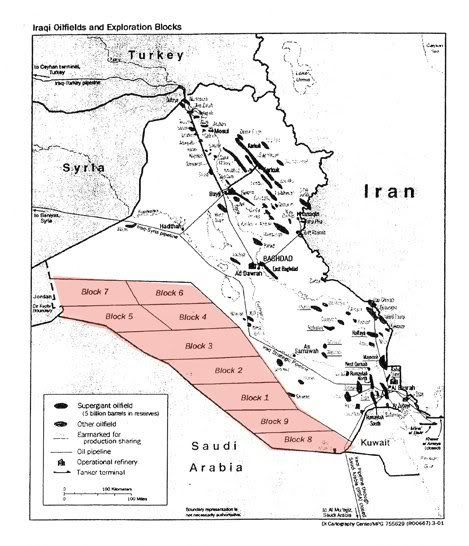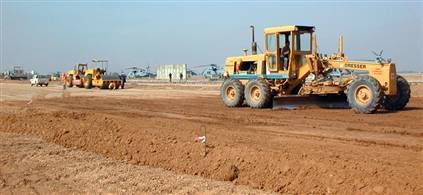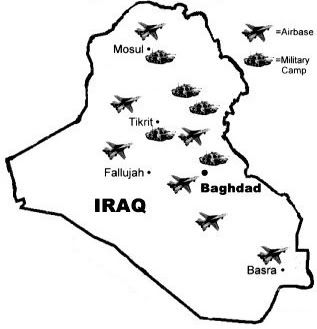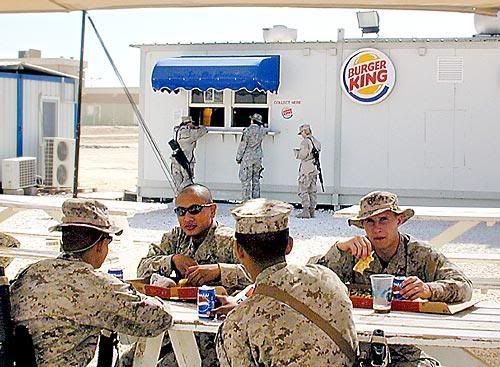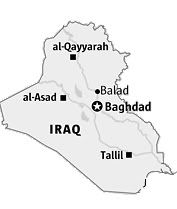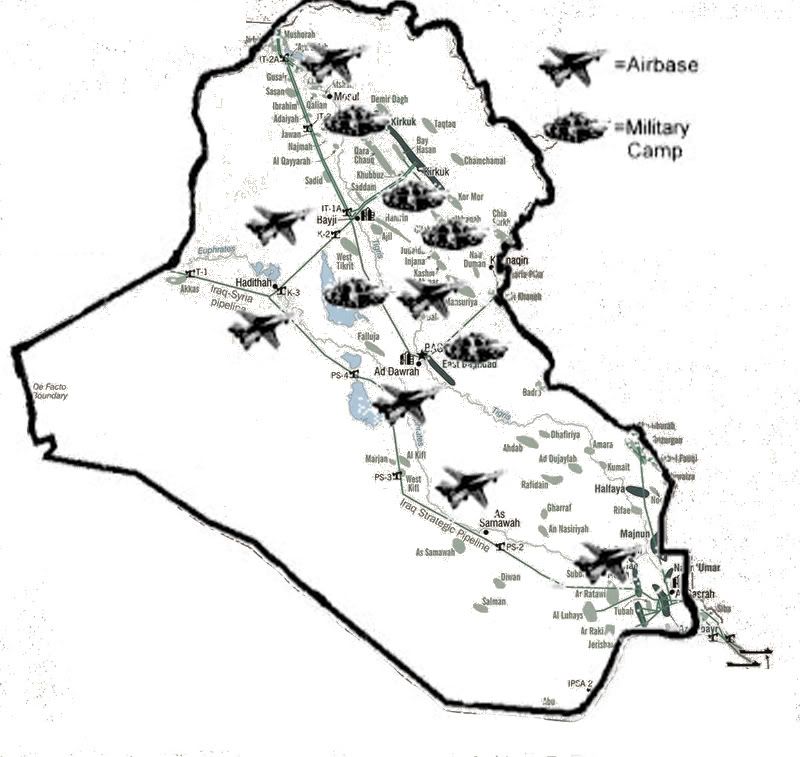The nomination of Robert Gates to replace Don Rumsfeld as Secretary of Defense has fueled claims that Gates is part of the realist-pragmatic group of advisors that served Bush the Older and now are being called upon to help Bush the Younger extricate the United States from a quagmire in Iraq.
It is also not lost on many Washington insiders that, according to Bob Woodward, author of the bestseller State of Denial, that President Bush has turned to Henry Kissinger (the personification of Realpolitik) to assess the dire situation in Iraq which he remarked two weeks ago on the BBC was totally hopeless in terms of Washington's various objectives.
In a major op-ed item in The Washington Post on Nov. 24, Kissinger who argued against a precipitious withdrawl in U.S. troops strongly implied that they had become bargaining chips in prospective negotiations with Iran -- an argument that may have resonated with the President with whom Dr. K may well have cleared the essay before publication.
With regard to the nomination of Gates to oversee the war effort, James Mann, who authored The Vulcans which explored the emergence of the foreign policy team of the current Bush Administration, had questioned Gates's credentials as a realist in an op-ed item in The Washington Post on Nov. 10. Mann pointed (correctly) to Gates's hawkish or neo-conservative worldview on how to deal with the Soviet Union during the Reagan era when he was a loyal deputy to CIA Director Wild Bill Casey.
Little love was lost between the Kissingerian realists and the neo-conservatives personified by Casey and Jeane Kirkpatrick in those years. So where now does Bob Gates fall in this political spectrum among foreign policy experts associated with the Republican Party?
The Kissingerian Clique
Gates joined the CIA during the Johnson Administration and for him to have been part of the realist-pragmatist faction within Republican circles, there should be some traceable connection to Kissinger -- whose career I explored in my intellectual biography of Dr. K entitled Kissinger and the Meaning of History published by Cambridge University Press in 1978.
For his part, Kissinger did not want serious intellectual rivals near him, but he did have a core group of loyal, competent assistants and aides during the Nixon years, General Alexander Haig (Reagan's first Secretary of State) was Kissinger's deputy on Nixon's National Security Council staff. But the best known Kissinger loyalists were William Hyland, Hal Sonnenfeldt, Winston Lord and Peter Rodman.
Lawrence Eagleburger who was briefly Secretary of State in 1992 and who has just replaced Gates on the Baker-Hamilton Commission is also a longtime Kissinger loyalist from the NSC of 1969-1972. However, his original career track was independent since he had been a career diplomat who had risen at the State Department to which Kissinger only moved in 1973.
Brent Scowcroft (Gates's presumed primary intellectual mentor) was Nixon's military advisor and Haig's replacement as Kissinger's NSC deputy in August 1973. Scowcroft joined Kissinger and Eagleburger in 1982 as the founding partners of the firm, Kissinger & Associates.
The cohesiveness of the Kissinger realist clique has been impressive over the years
Winston Lord's selection as a new ambassador to China by Reagan in 1985 was a clear sign of the more pragmatic influence of Kissinger, Scowcroft and Eagleburger -- the last two being dispatched by Bush the Older to Beijing in the wake of the Tiananmen Square massacre in June 1989
Nonetheless, the Kissingerian clique has developed some divisions. Peter Rodman drifted away from Kissinger and toward the neo-conservatives while serving in many top posts at the NSC and State Department during the Reagan-Bush administrations. In fact, Rodman recently resigned from the Pentagon after serving since 2001 as a close advisor to Rumsfeld in the post of Assistant Secretary for International Security Affairs (ISA).
The biggest rupture among the Kissingerians is that Scowcroft could not swallow the decision in favor of a preemptive invasion of Iraq in 2003, whereas Kissinger ultimately did voice support, though in an oblique fashion, while gnashing his teeth.
As for Gates, there is little doubt that his primary patron following the death of Casey in 1987 has been Bush the Father, who was Ambassador to China and then CIA Director for President Ford in 1976. The elder Bush was a great admirer of Kissinger for the opening to China and the pursuit of triangular diplomacy with the two Communist powers.
Finally, James Baker (Secretary of State 1989-1992) may have been an admirer as well, and seems to share the same realist-pragmatic approach to foreign plicy challenges. But Baker's deepest political ties are to the Bush family, and not to Kissinger nor to Reagan though he served as the latter's White House Chief of Staff. Baker was chairman for the older Bush's unsuccessful campaigns for a Senate seat from Texas in 1970 and for the White House in 1980. Furthermore, Bush the Younger turned to Baker to protect his stake in the Florida vote in the 2000.
Where Does Gates Fit In?
Gates was not originally part of the Kissinger-Scowcroft-Eagleburger realist clique. Given that he joined the CIA in 1966 at 23 and had not studied under Kissinger at Harvard as some like Rodman did, Gates was not in a position in the late 1960s or early 1970s to become part of the original core group of Kissinger proteges or loyalists. In fact, Gates tells us in his memoirs entitled From the Shadows (1996) that while a CIA analyst, he participated in an anti-Vietnam War rally in Washington in the early 1970s.
Evidently not a Cold Warrior, Gates's CIA career advanced but he was impatient to climb through the ranks and decided to jump at an offer to serve under Brent Scowcroft on the NSC staff. Claiming that his superiors warned him of the downside, he arrived at the White House in July 1974 just as Nixon was about to resign over the Watergate scandal. This segment of the memoirs is quite intriguing. Gates remarks that he took over the desk that Hyland occupied as one of the NSC's Soviet experts after Hyland had moved over to the State Department with Kissinger, Lord and Sonnenfeldt.
Given that Gates was an intelligence officer, there is not much of a paper trail outside his memoirs as to whether he privately shared the neo-conservative complaints in the 1970s about policy (both Kissingerian and then Carterite) being too soft toward the Soviet Union. What he says there suggests that he did not.
In his memoirs, Gates offers a balanced, insightful evaluation of the Nixon-Kissinger detente praising them for maintaining the central strategic balance of power with the Soviets. Surprisingly he even strongly defends President Carter for having sustained several weapons programs that protected American strategic interests.
Gates complains that Carter has been given a bum rap about being soft on the Soviet Union and he is very fond of Carter's NSC Chief Zbigniew Brzezinski, Kissinger's critic and rival going back to their days as Harvard graduate students. Gates describes himself as a senior NSC aide to Brzezinski in the late 1970s. In his memoirs, Power and Principle (1983) Brzezinski makes only one passing mention of Gates as one of several aides that he "burned out", though adding that Gates was "the epitome of discretion and good judgment".
No hard core neo-conservative would ever be as generous as Gates is toward these Administrations from Nixon through Ford to Carter -- though perhaps Gates found it politically advantageous to give all Presidents their due in helping to win the Cold War which seemed like ancient history by the mid-1990s. What is amazing is in all this is that in the 1980s Gates became legendary for becoming joined to the hip of the notorious, quite corrupt Wild Bill Casey.
Getting Ahead with Little Strain?
So how did Gates succeed in securing high position in so many Administrations that were sharply opposed to one another? Was he a chameleon? To some degree he had to be. Did he really actively seek to hang on in top posts either at the CIA or the NSC when a new Administration came to power?
In his memoirs, Gates consistently tries to convey the impression that once he arrived at the NSC to work under Scowcroft in 1974, men in power (Brzezinski in 1976, CIA Director Stansfield Turner in 1979, Casey in 1981 and then Scowcroft in 1989) sought him out or were persuaded by others that Gates was the ideal man to serve as a close assistant. Gates never seems to lift a finger to advance his smooth ascent to ever higher positions from one Administration to another over nearly two decades.
All this seems quite disingenuous and in sharp contrast to his vaunting ambition to become someday the CIA Director, which he declared to seasoned Soviet analyst Mel Goodman on Gates's first day at work as a junior analyst at the CIA in Langley, Virginia.
Concerning his view of the neo-conservative critique of detente in the 1970s prior to working for Casey, Gates provides only a few clues since in his memoirs he never mentions the neo-conservatives or the Committee on the Present Danger by name.
He even avoids talking about the controversial decision of the older Bush when he capitulated to the neo-conservatives by inviting them to critique the internal CIA analysis of the Soviet strategic nuclear threat in 1976 -- the notorious Team B Affair. He merely notes that Bush as CIA Director signed off on a national intelligence estimate that reflected this more ominous neo-con view of Soviet capabilities.
Yet ultimately, Gates became Casey's Golden Boy whom many CIA analysts accused in the 1991 Gates confirmation hearings of having given Casey what he wanted or blocking analysis that Casey would not like. There is no doubt that Mann is correct that in this period Gates was a super hawk on relations with the Soviets, vigorously hyped the threat and consistently misread Gorbachev.
The complaint about this slanting intelligence also can be found in the memoirs of George Shultz, Reagan's Secretary of State, who described in his memoirs Turmoil and Triumph (1993) heated discussions with Gates. Even Baker in his memoirs describes a major confrontation with Gates shortly before the fall of the Berlin Wall in November 1989 concerning policy toward the Soviets. Gates at the time was Scowcroft's NSC deputy.
Unlike Richard Perle and Frank Gaffney who were ousted at Defense when Reagan wanted to pursue arms control with Gorbachev in the late 1980s, Gates was able to hang on as CIA Deputy to Judge William Webster, Casey's replacement after Gates was forced to withdraw his own DCI nomination in early 1987 due to his own entanglement in the Iran-Contra scandal.
With nowhere to go inside the CIA, he engineered in 1989 a move back to the NSC to work for Scowcroft.
Basically Gates, the quiet staff man in the 1970s who became in the 1980s a super hawk to fly high with Casey, was able to morph into a moderate realist at the Bush 41 NSC staff during the end game with the Gorbachev regime and during the successful Gulf War in 1990-1991. For his part, Bush 41 in a bold move during Special Prosecutor Lawrence Walsh's Iran-Contra investigation, thought it a good thing in mid-1991 to get controversial Gates out at Langley to mind the store there.
But this nomination triggered the big outcry -- nearly 50 analysts came forward to express dismay to the Senate Select Committee on Intelligence (SSCI) about Gates's game playing with intelligence analysis either directly or though his loyalists and proteges in senior management posts. This was in addition to lingering suspicions about Gates's role in the Iran-Contra affair. Essentially, Gates argued that he was largely "out of the loop" even though he was the number two man out at Langley.
Ultimately with the help of his supporters on the SSCI -- primarily Chairman David Boren and his Staff Director George Tenet -- Gates was able to beat down the sizable anti-Gates chorus. Gates took extra steps to give a personal reassurance to the wavering Senator John Glenn who was still unhappy about the manipulation of CIA intelligence concerning the Pakistani nuclear weapons program in the 1980s. Nonetheless, 31 Democratic Senators could not swallow Gates and voted against him.
Consummate Careerist?
What is Gates then? He was not an original card-carrying member of the Kissinger-Scowcroft-Eagleburger realist clique. Nor is there evidence that he was a hard-core neo-conservative in the 1970s who was just waiting for something like the Reagan Revolution to take place and offer him in 1980 the golden opportunity to bond with such a hard-core Cold Warrior like Will Bill Casey.
He appears to have been a political moderate in the 1970s who converted to the neo-con/Casey view of the USSR to advance his career in the 1980s. That conversion into a true-believer was essential in the CIA once it became totally captive of the notorious Casey. Gates knew that is what he had to do to advance further. Where else could he have gone in 1981? Get someone in the Carter camp to find him a position in a left/liberal think tank like the Carnegie Institute or Brookings?
He did not want that. He did not want to give up his government career or his undying ambition to be CIA Director. Thus, he became a super-hawk in order to advance under the watchful eye and patronage of the all-powerful CIA Director Casey. After the Iran-Contra scandal hit in 1986, Gates bided his time until he could find in early 1989 a path to hook backup with Scowcroft at the NSC to enter into the Bush camp, which prior to that time he had no connections.
These are extraordinarily slick career moves, especially for someone who had become by 1987 highly controversial. Gates's long and astonishing career path has a unique trajectory and reflects the skill and determination of a consummate careerist.
Those with all-consuming ambition know that, given the abrupt power shifts which are inevitable in Washington, for one to have a steady ascent into the upper echelon and then to stay there, one must shift -- make abrupt shifts in some cases -- and ultimately be a chameleon. Otherwise one has to languish for time in political exile as most senior foreign policy experts typically do such as Tony Lake and Sandy Berger did from 1980 to 1992. Kissinger left the government at the age of 53 and has never returned, at least not officially.
There is no reason to doubt that if Reagan had lost in 1980, Gates would have lobbied hard to become Deputy DCI or the DCI himself under a second Carter Administration. He had worked for Brzezinski and was Admiral Turner's Executive Assistant, so he might well have succeeded in that. He only became a neo-conservative super-hawk in the 1980s because it was necessary to survive and thrive in the CIA under Casey.
The price tag for that was inevitably that he had to give up the CIA Director's post in 1993 when Bill Clinton took office.
"The Secret Good Guy"?
Gates is bright, serious about substantive issues, and highly experienced in many areas within the government and knows the Intelligence Community as well as anyone -- though this is not the same has having long experience in the military sphere. Gates's past views concerning the challenge of the Soviet Union are not obviously relevant to how he views the challenge of Islamic fundamentalism and the terrorist threat.
There have been some hints in recent years that privately he was worried like Scowcroft that the decision to invade Iraq was a mistake, and that he thinks opening dialogue with Iran would make political sense. And in his written responses to questions from the Senate Armed Services Committee, Gates questioned the way the US military effort in Iraq was managed under Rumsfeld.
Gates still has a long track record of speaking Power to Truth in keeping with the biases or desires of his immediate superior whomever that might be. However, it is possible that the danger that Gates actually will "cook the books," or slant the facts to defend the military effort to make it look better than it is, may not be very high.
The situation in Iraq has deteriorated too far for someone to pull that off given the widespread skepticism about success in a nation plunging toward a full-blown civil war and an equally widespread desire among the American voters to get out of Iraq as soon as possible.
Probably the more relevant question is that -- since President Bush in a sweeping statement while at the summit in Jordan ruled out troop withdrawals until the mission is accomplished -- will Gates be willing to resign if the situation makes that goal however it may be defined, look totally foolish? Or will he defend any policy position that the President wants no matter how hopeless out of blind loyalty to the Bush family?
Given that many would agree with Scowcroft that Gates seems "crazy" to have accepted this appointment, why exactly did he take this very high risk position which might entail presiding over a full-blown debacle? After all, he had turned down Bush over possible appointment to the Director of National Intelligence post (DNI) which was later given to John Negroponte.
In an ABC interview with George Stephanopoulos, White House Chief of Staff John Bolton stated that if Gates had turned Bush down on the Pentagon job, then Rumsfeld would have stayed -- a very revealing hint of what we now know: namely, that the President sees himself only replacing a cabinet officer and not making a fundamental shift in policy.
For his part, Gates probably owed the Bush family too much to say no twice, especially since what were the odds that Bush could find someone else on short notice just before the election or at any time after the big political hit that the President took? Slim to none.
Gates surely owes the Bush family a lot and not only for his government appointments. It hired him to be the Director of the George Bush School of Government at Texas A & M University and then helped him secure the post of president there. How many distinguished well-known colleges and universities do you know who would have been willing to accept a guy as politically tainted as was Gates (remember Iran-Contra and the controversial 1991 confirmation hearings) as their president? Not very many.
But this large debt does not mean that Gates necessarily has to swallow and defend anything. No one would hold it against him if he bailed out at some point on the White House. Thus, he is in a strong position in that the extended Bush family now needs him more than he needs it.
After all, if Gates feels pushed too far, even for his comfort, then perhaps in his own devious Machiavellian mind, he might calculate that a dramatic, heroic resignation would help set up a future assignment as CIA Director or Secretary of Defense after the 2008 elections if the Democrats take back the White House. Even Brzezinski might put in a good word for him.
More seriously, given the rapidly deteriorating situation in Iraq, the Democratic leaders in Congress have to decide whether, if in confirming Gates, they are falling into a clever trap set for them by the Bush White House as some have begun to speculate.
If they confirm Gates in a pro forma fashion -- especially if he gives no hint that he will make any significant effort to persuade the President to change policy -- then this would mean for many voters that the Democrats have been suckered into becoming shareholders in the current policy. Surely, the White House would interpret a rubber stamp confirmation of Gates as a clear vote of confidence in its Iraq policy, whatever that is now.
If Gates had been a different person with a less controversial career and more of a record for independence, then the dilemma would not be as great for the Democratic leadership. In 1991, 31 Democratic Senators erred on the side of caution and voted against Gates to become CIA Director. At that time, the Soviet Union was vanishing from history. Today the stakes in Iraq and the Middle East are much greater.
Although many Democratic senators want to get rid of Rumsfeld so badly, and may not press Gates in the confirmation hearings, some senators desiring a higher comfort level probably will seek from him strong, compelling reasons to confirm him given his past and the rapidly deteriorating situation in Iraq. Those Democratic senators with Presidential aspirations will have to ponder the Gates nomination, if they want to distance themselves from the President's apparent preference for "stay the course" in Iraq
For his part, the main challenge for Gates may become quite similar to that which Kissinger faced during the Vietnam War: namely, the need to give the Democrats, the media and the public at large the impression that he is some kind of "Secret Good Guy" who once back in on the inside, can carry the cause of those growing numbers of Americans who are now highly skeptical of, if not outright opposed to, the continuation of the war. That is a tall order, requires a lot of trust and is now a difficult task made more difficult by the President's sweeping statements at the Jordan Summit, especially the remark that there will be no withdrawals until the mission is accomplished and there will be "no graceful exit from Iraq".
Peter W. Dickson was a political-military analyst at the CIA on European Affairs and nuclear proliferation issues for more than 20 years.


